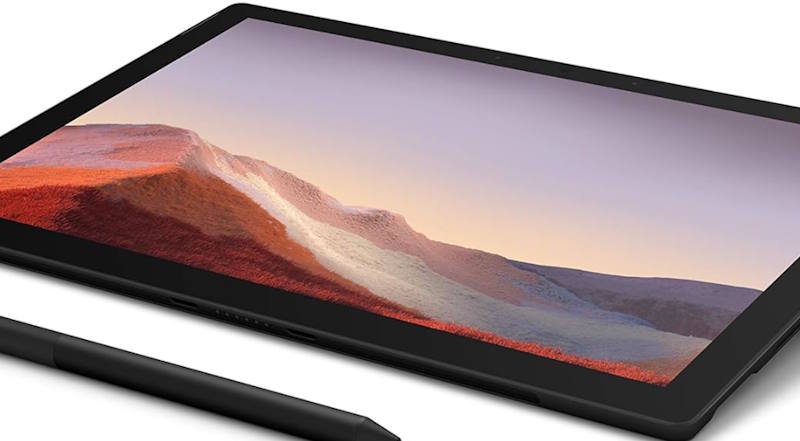When Microsoft introduced the Surface Pro 7 in October 2019, the device was expected to continue the legacy of the Surface lineup—bridging the gap between laptops and tablets while offering premium build quality and high-end performance. But did it live up to expectations? Let’s take a deep dive into what Microsoft aimed for, what users actually got, and how it fared in the market.
Market Position and Microsoft’s Ambitions
The Surface Pro series has always been positioned as a high-end 2-in-1 device, targeting professionals, students, and creatives. Microsoft aimed to refine the Surface Pro formula by improving performance and connectivity while maintaining the sleek design that made the series popular.
Coming off the success of the Surface Pro 6, which featured improved battery life and a matte black finish, Microsoft sought to address some of its limitations with the Pro 7. The key upgrades included Intel’s 10th-gen Ice Lake processors, a long-awaited USB-C port, and enhanced graphics performance. Microsoft also emphasized versatility, hoping the device would attract users looking for a powerful alternative to traditional laptops like the MacBook Air or Dell XPS 13.

What the Surface Pro 7 Brought to the Table
Compared to the Surface Pro 6, the Surface Pro 7 introduced several notable improvements:
- USB-C Port: One of the most requested features finally arrived, replacing the outdated Mini DisplayPort. However, it lacked Thunderbolt 3 support, which disappointed many power users.
- Intel 10th-Gen Processors: Users could choose between Core i3, i5, and i7 options, leading to better performance and efficiency.
- Iris Plus Graphics: For the i5 and i7 models, Intel’s integrated Iris Plus Graphics provided a noticeable boost for light gaming and creative work.
- Faster RAM and SSDs: The Pro 7 included LPDDR4x RAM, increasing speeds and efficiency.
- Improved Microphones: Microsoft introduced Studio Mics for better video calls and voice recordings.
Despite these enhancements, the overall design remained virtually unchanged from the Pro 6, which was a disappointment for those expecting thinner bezels or a fresh look.
What Users and Reviewers Said
The Surface Pro 7 received mixed reviews. Here’s what people liked and disliked:
What Was Good:
✅ USB-C Port: Though limited in capabilities, it was a welcome upgrade.
✅ Strong Performance: The 10th-gen Intel chips improved responsiveness, and the i7 model handled multitasking well.
✅ Excellent Display: The 12.3-inch PixelSense Display remained one of the best in the industry.
✅ Keyboard and Pen Support: The Type Cover and Surface Pen continued to offer a great typing and writing experience.
What Was Not Good:
❌ Battery Life Took a Hit: Many users reported a drop in battery life compared to the Pro 6, with real-world usage often below Microsoft’s claimed 10.5 hours.
❌ No Design Refresh: The thick bezels and overall aesthetics started feeling outdated, especially compared to competitors.
❌ Lack of Thunderbolt 3: This was a major letdown, limiting external GPU and high-speed data transfer capabilities.
❌ Still Expensive: The device remained pricey, especially when factoring in the cost of the Type Cover and Surface Pen, which were sold separately.
Market Performance and Impact
The Surface Pro 7 sold well but didn’t shake up the market. While businesses and Surface loyalists appreciated the refinements, it failed to attract significant numbers of new users. Microsoft continued to face stiff competition from Apple’s iPad Pro with its powerful M1 chip, as well as ultraportable laptops like the MacBook Air (M1) and the Dell XPS 13.
Many saw the Pro 7 as a safe but uninspired update rather than an innovative leap forward. Microsoft played it conservatively, opting for minor refinements instead of a major overhaul. This led to a sense of stagnation, and many waited for the Surface Pro 8, which finally introduced a 120Hz display, thinner bezels, and Thunderbolt support.
Final Thoughts: Was the Surface Pro 7 Worth It?
For users upgrading from older Surface models like the Pro 4 or Pro 5, the Surface Pro 7 was a solid choice. However, for those already using a Surface Pro 6, the incremental improvements didn’t justify the upgrade.
Microsoft made meaningful upgrades, but missed opportunities in design, battery life, and connectivity kept the Pro 7 from being a true game-changer. It remains a capable device but, in hindsight, feels like a stepping stone toward something better.
What do you think about the Surface Pro 7? Did Microsoft play it too safe? Share your thoughts in the comments!